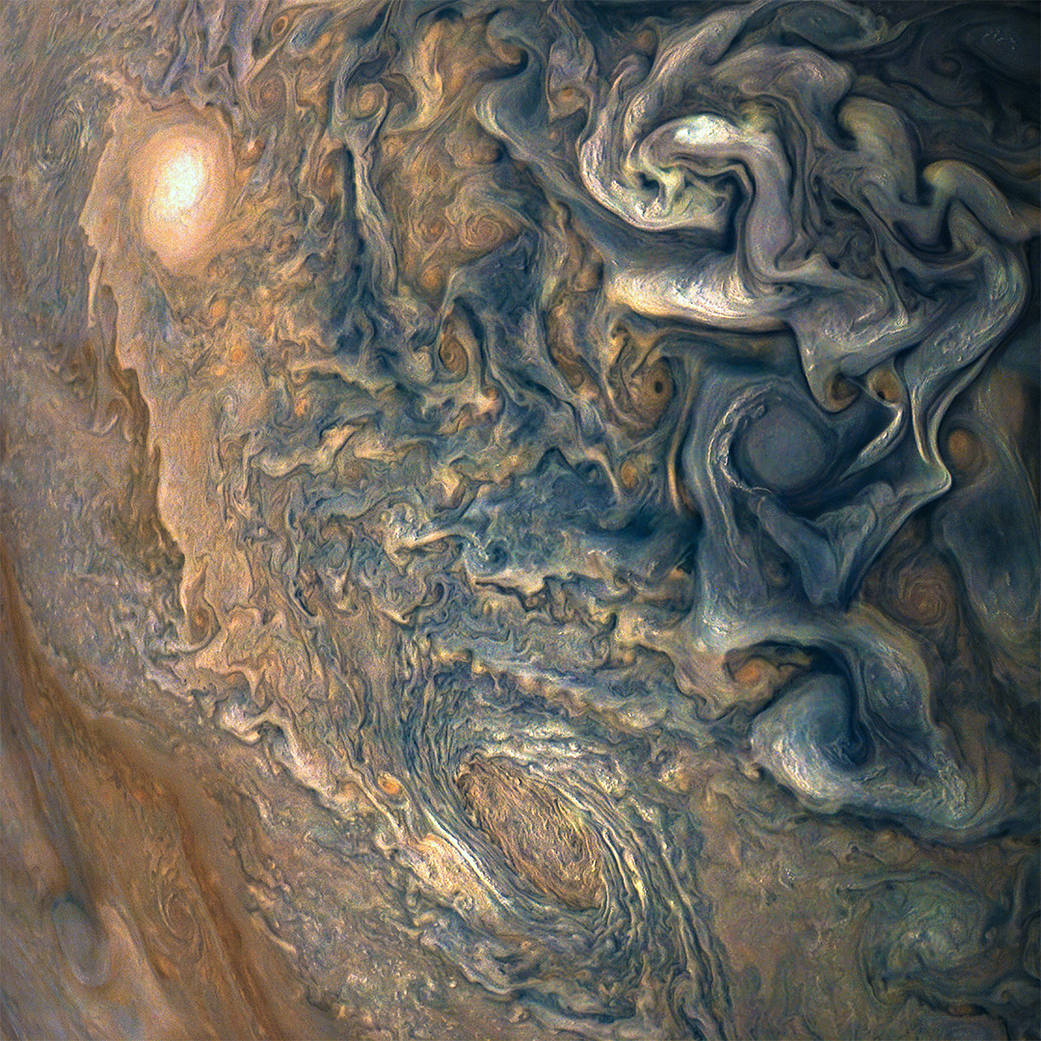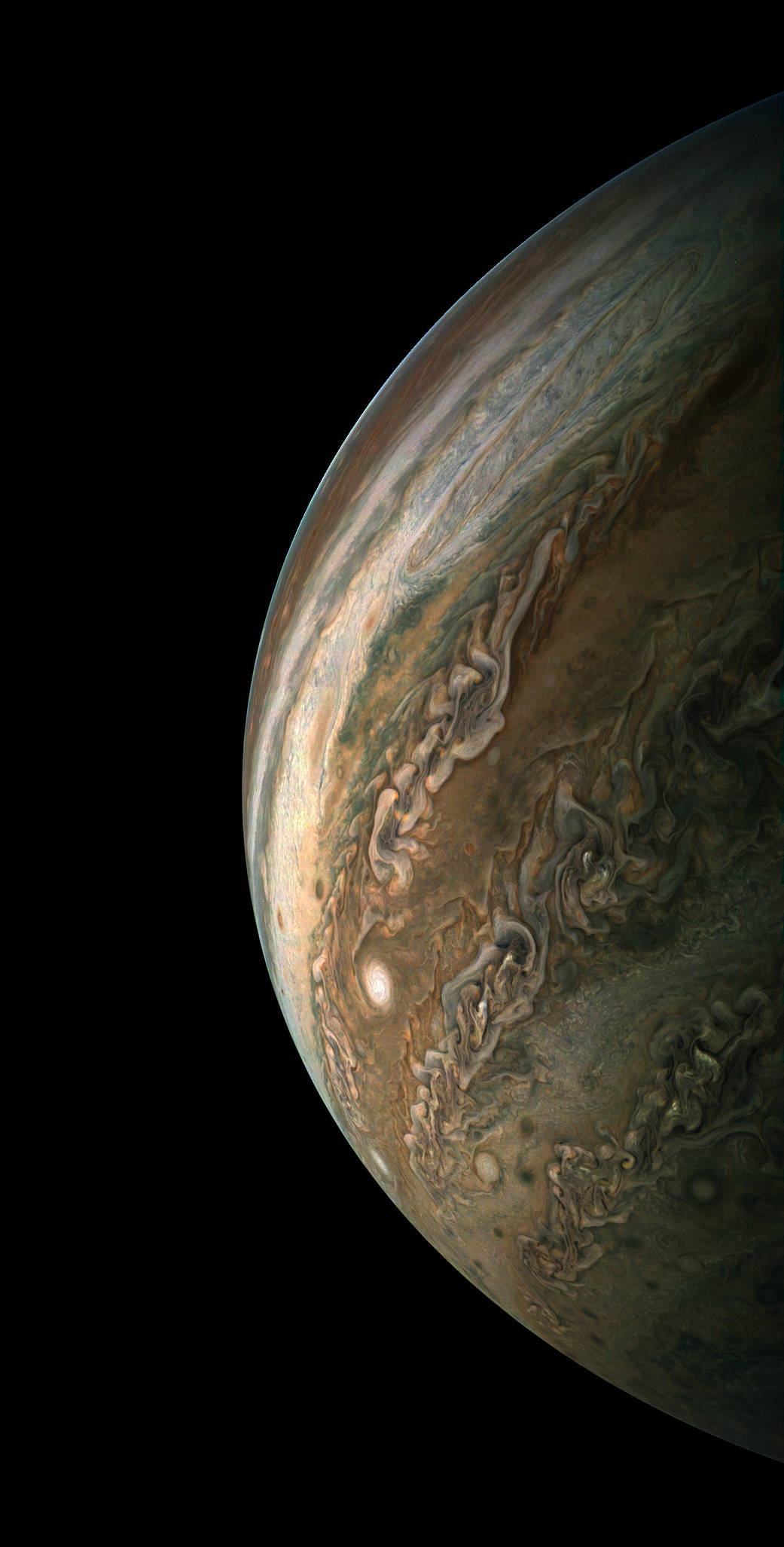THE SOUTHWORTH PLANETARIUM
70 Falmouth Street Portland, Maine 04103
(207) 780-4249 usm.maine.edu/planet
43.6667° N 70.2667° W
Altitude: 10 feet below sea level
Founded January 1970
2021-2022: LX
"A computer once beat me at chess, but it was no match for me at kickboxing." -Emo Philips
THE DAILY ASTRONOMER
Thursday, January 6, 2022
Behold Jupiter!
_______________
Thank you, Tom!
_______________
It has often been said that a photo is worth a thousand words. Well, the veracity of that statement certainly depends on the quality of both the words and the photo. While I won't comment about the worth of the DA words (and am actually afraid to do so), the worth of this image is self-evident.

You are seeing the kaleidoscopic cloud tops of the solar system's largest planet, Jupiter. This beguilingly beautiful -almost hypnotic- image was captured by the Juno* spacecraft currently in orbit around the 5th world. Approximately every 53 days, Juno dives down and takes some snaps of the Jovian cloud tops while skimming over it at 130,000 miles per hour. Juno follows a wide orbit that conveys it far from this churning gas giant so as to minimize its exposure to the planet's intense radiation fields.
Oh, let's have another:
These swirls, eddies, cyclones and band instabilities are a testament to the "atmosphere's" dynamism and complex chemistry: the mix of convecting water, ammonium sulfide and ammonia, among a wide array of other substances. Also, its internal heat sources generate about 6 watts per square meter of energy, slightly more than half of the 10 watts of energy per square meter it receives from the Sun.**
Oh, just one more:

Today's DA is more of an art gallery than article: an opportunity to both admire this stunningly beautiful planet and also to imagine the artistry of the myriad planets in our galaxy that have yet to behold. One thing is certain: these images provide us with direct evidence that we have only just begun to understand the wondrous worlds within our solar system.
Tomorrow...a quiz about the year that was.